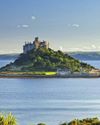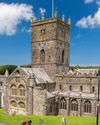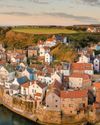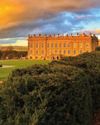From aristocratic foibles to the complicated rules surrounding courtship, we explore the dos and don’ts of Regency society

In the early 19th century, after serious bouts of illness, King George III became increasingly unstable, before descending into permanent mental illness in 1810. The following year, his son George, Prince of Wales, was sworn in as ‘Prince Regent’ to rule in place of his ailing father.
A man of extravagant tastes, the Prince was hugely influential over the Arts and upper-class society. The so-called Regency period officially began when George became Prince Regent, but his influence was felt earlier, and unofficially the period covers a longer span, from 1780 through his reign as George IV until the accession of Queen Victoria in 1837. Although the era was one of immense political and economic turbulence – the country was living through the Napoleonic Wars – it was also a time of cultural refinement, thanks in no small part to the Prince Regent himself.
George was known for his excesses, but he was also a passionate connoisseur and a generous patron of the Arts, and with his influence and encouragement the country underwent a mini-Renaissance. Fine arts, literature and architecture flourished.
The Prince’s influence also extended to men’s fashion: he stopped powdering his hair to protest against the powder tax introduced in 1786 and, to minimise his obesity, took to wearing darker colours, high necks and pantaloons instead of breeches – and the gentlemen of England followed suit.
This combination of hedonism and culture is reflected in the building of the ornate Carlton House, George’s London residence for several decades, and the magnificent Brighton Pavilion, built complete with domes and minarets as an opulent seaside retreat. Here he could meet discreetly with his mistress Maria Fitzherbert, twice-widowed and six years his senior, whom he secretly married in 1785.
Diese Geschichte stammt aus der January/February 2019-Ausgabe von The Official Magazine Britain.
Starten Sie Ihre 7-tägige kostenlose Testversion von Magzter GOLD, um auf Tausende kuratierte Premium-Storys sowie über 8.000 Zeitschriften und Zeitungen zuzugreifen.
Bereits Abonnent ? Anmelden
Diese Geschichte stammt aus der January/February 2019-Ausgabe von The Official Magazine Britain.
Starten Sie Ihre 7-tägige kostenlose Testversion von Magzter GOLD, um auf Tausende kuratierte Premium-Storys sowie über 8.000 Zeitschriften und Zeitungen zuzugreifen.
Bereits Abonnent? Anmelden

Take The High Road
The North Coast 500 is an epic route that takes you past some of the country’s most spellbinding scenery

Where To Stay In 2021
Whether it’s a country house escape, a rustic bolthole or a sophisticated city stay, you’ll find your perfect getaway on these pages

The EMPEROR'S ISLE
Tresco was once a treeless and windswept island, the haunt of smugglers. Dramatically transformed by one man’s vision, it is now one of Britain’s most beautiful spots

Hidden Cornwall
Discover the beautiful, beguiling and rugged land of West Penwith in the far reaches of Cornwall

Wonders of Wales
With its wild cliffs, pretty coves and puffins galore, St Brides Bay holds the best of Pembrokeshire

Yorkshire's MOORS & SHORES
Equal parts mystical moor and secluded seashore, the Yorkshire coast beats some of Britain’s more traditional summer destinations hands down

PEAK PERFORMANCE
From heathery moors to rolling hills and underground caverns, the Peak District is home to some of the most majestic landscapes in the country

Culture CAPITAL
After a year of stop-start openings, London's museums are welcoming visitors back in 2021 with an array of blockbuster exhibitions

HISTORIC NORFOLK
Spend time exploring this peaceful county, whose stately homes are a grand counterpoint to its unadorned rural landscapes

1066 COUNTRY
England’s sunny south coast has a rich heritage, harbouring ancient castles and evocative landscapes that tell the story of the Battle of Hastings and beyond